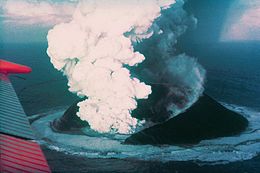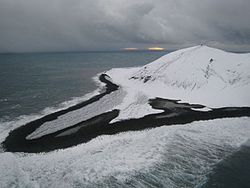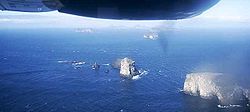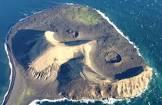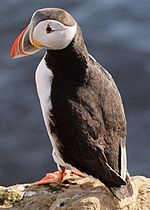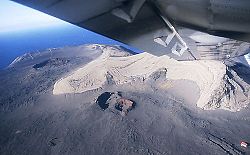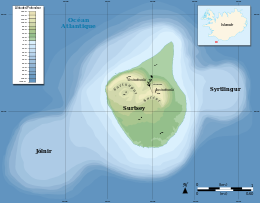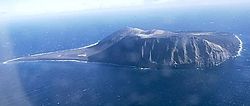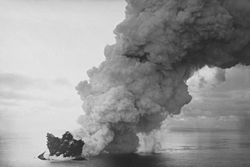Surtsey is a volcanic island located approximately 32 km off the south coast of Iceland. It was formed by a volcanic eruption between 1963 and 1967. The island is all the more remarkable for the fact that it has been carefully preserved since its creation, providing a pristine natural laboratory. Surtsey has long provided unique information on the colonization of new lands by plants and animals, as it has not been disturbed by humans. Since the island was first studied in 1964, scientists have observed seeds arriving with ocean currents, the emergence of molds, bacteria and fungi, and in 1965 the first vascular plants, which by the end of the first decade numbered 10. By 2004, the number of vascular plants reached 60, in addition to 75 species of bryophytes, 71 species of lichens and 24 species of fungi. 89 bird species have been recorded on Surtsey, 57 of which breed elsewhere in Iceland. The 141-hectare island is also home to 335 species of invertebrates.
| image |
http://commons.wikimedia.org/wiki/Special:FilePath/Surtsey%20eruption%201963.jpg |
| media legend |
Ostrůvek Surtsey 16 dní po vzniku (16. listopadu 1963) |
| image |
http://commons.wikimedia.org/wiki/Special:FilePath/Surtsey%20from%20plane%2C%201999.jpg |
| media legend |
Vue aérienne de Surtsey depuis l'ouest en 1999. |
| locator map image |
http://commons.wikimedia.org/wiki/Special:FilePath/Vestmann%20archipel%20topographic%20map-fr.svg |
| media legend |
Carte des îles Vestmann. |
| location map |
http://commons.wikimedia.org/wiki/Special:FilePath/Topographic%20map%20of%20Surtsey-fr.svg |
| media legend |
Carte de Surtsey. |
